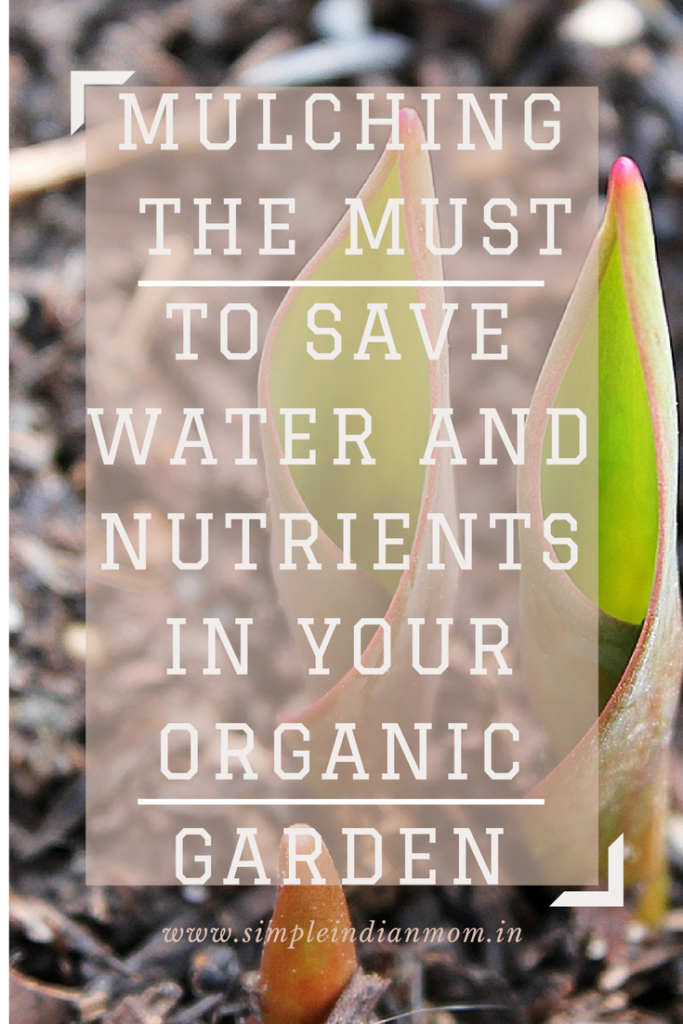
Mulching – the term used to cover the soil that is around the plant in your organic garden is becoming more and more important in terms of helping you save water (which is the most important need of the day) and also nutrients from getting wasted.
Mulches help soil retain moisture in summer, prevent weeds from growing and protect the roots of plants in winter.
What Is Mulching
Covering the surface of cultivated or planted soil with loose coverings or sheets of material is called Mulching. You can apply a mulch either on the soil or on top of the compost or manures you have applied.
Mulching is helpful in many ways, especially if you are using it in your organic kitchen garden.
- Retains soil moisture and reduces evaportational loss.
- Suppress weed growth around the plant
- Improve soil texture by adding more organic matter to it
- Does not let any space for pests to grow and reproduce
- Maintains soil temperature, thus protecting the roots
- Encourage beneficial soil organisms
- Lets the fruits and vegetables fall on a safe and clean ground
- Enhances the general look of your plant in pot.
Natural Mulches
Since we are dealing here with organic gardening, I would advice you to use more of these mulches. The natural or the organic mulches are those materials which will also rot with time and enhance the fertility of the soil. Some of the Mulches that can be used are
- compost
- mushroom compost – the straw left after mushroom is produced.
- wood chippings
- manure – farmyard manure, vermicompost
- seaweed
There are other mulches which are not natural, which may be used as a way of decoration or f you do not get natural mulches
- Pebbles
- Stone Chippings
- Gravel
- Sea shells
- crushed CDs
- Glass and so on
When To Apply Mulch
Mid Spring to Autumn is the time when you should be looking to apply mulches. This is the time when the soil will be moist and warm. Winter and early spring will be tad bit cold for mulching.
However I would say, when you transplant a new plant, just pot some mulch around it.
Applying Mulch – How To Do It
If you are gardening in a small patch of land, begin by applying the beds and borders of the plant with the mulch, pile the mulch against the stem of fruit plants.
Thickness To Be Applied – 5 cm to 7.5 cm
Before applying mulch, make sure to remove the weeds.
Problems You May Face
If you have made the right choice of much, there is no need to worry about any problems, however, some mulches may cause trouble.
However, if they are in direct contact with the stems of trees or specimen shrubs they can cause the stem to soften, making it vulnerable to diseases.
If the manure is not of good quality, the manure itself will introduce weeds, pests or disease.
Bear in mind that once you have added a mulch to the soil you will need to apply extra water to reach the roots of the plants beneath. However while applying fertilizers you do not have to remove the mulches.
A build up of mulch can produce a hard layer, which is difficult for water to penetrate. Avoid this by only replacing a mulch when it has completely rotted away.
Read also
Bio-compost – Did You Know You Can Make Your Own Bio-composts From Your Kitchen Cabinet
Know The Fruit Trees That You Can Grow On Your Terrace Garden
Gearing Up Your Organic Potting Mix – All You Need To Know Of Potting Mixture
I am taking part inf #atozchallenge


